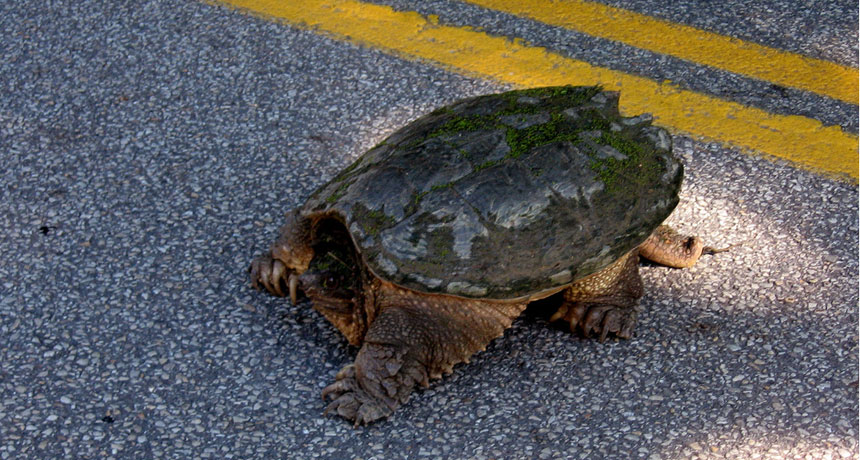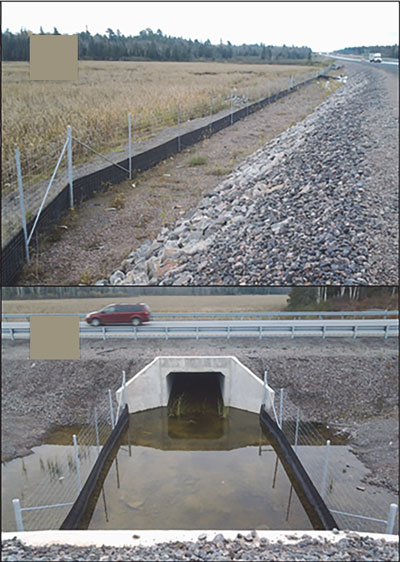‘If you build it they will come’ fails for turtle crossings

Traffic stopped for this snapping turtle crossing a road, but most reptiles aren’t so lucky. And a new study finds that the animals don’t use safe routes built by kindly humans when fences lining the roads are flawed.
Kerry Wixted/Flickr (CC-BY 2.0)
- More than 2 years ago
It’s really too bad that turtles can’t read.
If they did, it would make saving them so much easier. When people create an ecopassage so the reptiles can safely cross a road by going underneath or over it, they could let the animals know with little signs saying “Don’t become roadkill! Safe crossing, left 20 meters.”
Instead, we have to rely on fencing to keep the turtles and snakes off roads, which is a good idea because 98 percent or more of turtles are killed in their first attempt at a road crossing. But the reliance on fences may be a problem, a new study shows. When there aren’t effective fences to keep the reptiles out, they don’t use the ecopassages, James Baxter-Gilbert of Laurentian University in Sudbury, Ontario, and colleagues report March 25 in PLOS ONE.

They surveyed the roadside and put up cameras in the ecopassages to see what kind of animals used the crossings. They captured Blanding’s turtles and snapping turtles, and tracked their movements with radio transmitters. And they took painted turtles and placed them on the other side of the highway from their wetlands to see if they could make their way home through the tunnels.
Animals used the ecopassages, the study revealed, but the most common patrons of the underground passageways were ducks and geese. Few reptiles traveled through them. And, worse, turtles and snakes didn’t stay off the roads. The number of reptiles on the roadway near the ecopassages actually increased after they were put in place, resulting in lots of dead snakes and turtles.
A small part of the problem may be that many turtles, at least, don’t really want to use the ecopassages. The researchers tested the turtles’ willingness to enter the passages, and most turtles either took so long that the scientists gave up (69 percent) or the turtles refused to go in (22 percent).
But the bigger failure was in the fencing. Along three kilometers of road, rips, holes and washouts had caused 115 gaps. During the spring melt, up to 30 percent of the fence was submerged. And other areas had been left completely unfenced. In total, the researchers calculate, about two-thirds of the road was lined with permeable fence.
The solution: Build better fences. “Roads are meant to be long-lasting structures,” the researchers note, “and mitigation measures [to protect wildlife] should be equally long-lasting.”






